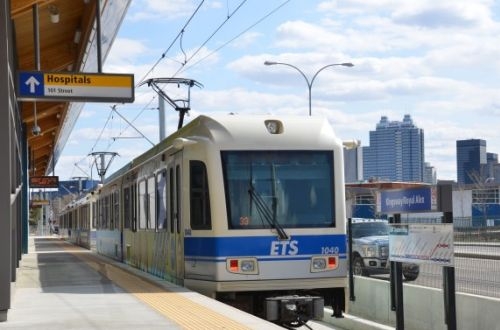The project involved adding a 3.3km branch from Jubilee/Health Sciences on the existing Capital Line to Northern Alberta Institute of Technology (Nait), with services running from Churchill on the existing line via a new tunnel to serve intermediate stations at McEwan and Kingsway/Royal Alex.
The project, which came in $C 90m below its $C 750m budget, also involved installing a new communications-based train control signalling (CBTC) system on 10km of the network and all 94 LRVs which is integrated with the existing ETS signalling system.
However, line speeds over the MacEwan - Nait section are currently limited to 25km/h over straight track sections and 10km/h over points with drivers using line-of-sight signalling following delays with delivering CBTC. The city subsequently appointed independent consultant Hatch Mott MacDonald to come up with the interim solution, which has increased the journey time to 14 minutes compared with the 7 minutes envisaged for the service. The new line is expected to cause extensive traffic delays at level crossings when traffic levels return to normal on September 8 following the Labor Day holiday weekend.
Thales was awarded a $C 45m contract, which subsequently rose to $C 53m, in July 2011 to supply its SelTrac CBTC solution within the city's 32-month timeframe for the project. This was in spite of reported warnings from engineers that the time required for the upgrades would surpass the project's schedule by five to six months.
A city audit of the project issued on August 17 found concerns with the way the city and Thales has handled the project.
The report said that Thales missed deadlines from the start, with equipment not installed on a third of the vehicles at the time of the audit, and a list published in April found 1300 unresolved deficiencies in the system. The report says that the city also failed to manage the project properly with limited communication about expected delays. "Throughout this project there were poor working relationships, frustrated stakeholders, and conflicting opinions on the state of deliverables," says Edmonton auditor Mr Dan Wiun.
Thales responded in a statement that it was not in receipt of an official copy of the safety audit report compiled by the city's consultant for the project, and provided a complete safety case authorising the system for operation but questioned the consultant's understanding of what is required to commission a CBTC system. It also said that it could not endorse the use of line-of-sight on September 6 because there was at that point no indication of the extent that its system would be used for the operations.
It added that 25km/h operation using the Thales system would imply it was safe at this speed and not above. "This displays a complete lack of understanding of the Thales system," the statement said. "The speed is enforced the same way whether it is 25km/h or at the line speed."
The City of Edmonton says it will continue to operate the service using line-of-sight until the new signalling system is fully operational.

